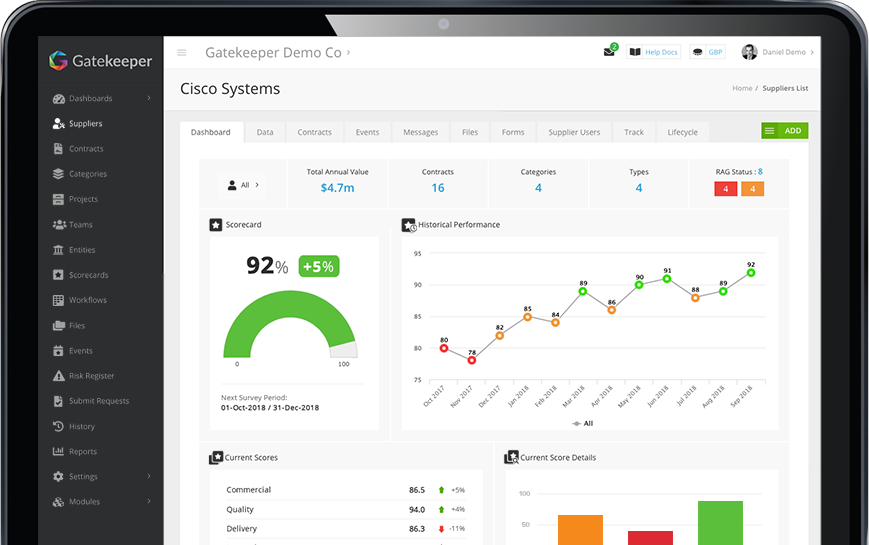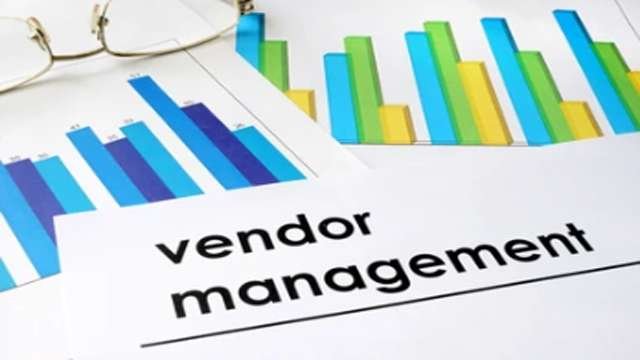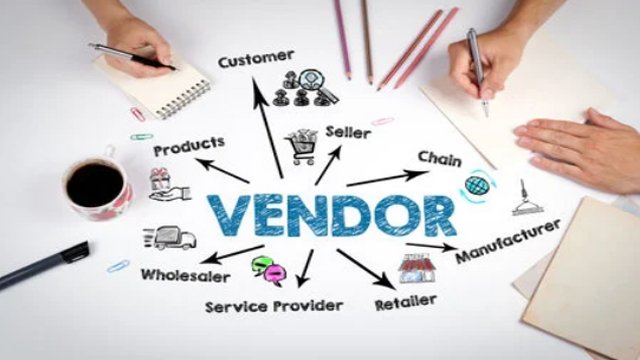In today’s business landscape, vendor management plays a crucial role in the success and growth of companies. Whether it’s sourcing raw materials, procuring services, or leveraging SaaS platforms, vendors have a significant impact on your organization’s bottom line. However, monitoring and evaluating vendor performance can be a complex task, especially as businesses scale and work with multiple suppliers. That’s where a vendor management scorecard comes in.
A vendor management scorecard is a powerful tool that allows businesses to track and assess the performance of their vendors using specific metrics. By utilizing a data-driven approach, organizations can gain valuable insights into vendor reliability, cost-effectiveness, customer service, and overall quality. In this comprehensive guide, we’ll explore the ins and outs of using a vendor management scorecard, its benefits, and best practices for implementation.
Image: Gatekeeper
Understanding Vendor Scorecards
1.1 What is a Vendor Scorecard?
A vendor scorecard, also known as a supplier scorecard, is a document that businesses use to objectively evaluate and rate the performance of their vendors or suppliers. It serves as a standardized tool to measure and compare vendors based on predefined criteria and key performance indicators (KPIs). With a vendor scorecard, organizations can track and monitor vendor performance over time, enabling data-driven decision-making in vendor selection, contract negotiation, and ongoing vendor management.
1.2 Why Use a Vendor Scorecard?
Using a vendor scorecard offers several benefits for businesses:
- Objective Evaluation: Vendor scorecards provide an objective assessment of vendor performance, reducing the influence of subjective experiences and biases. By using quantifiable data and predefined criteria, organizations can make informed decisions based on facts rather than personal opinions.
- Risk Mitigation: Vendor scorecards help identify potential risks associated with working with specific vendors. By tracking metrics related to compliance, product quality, and delivery efficiency, businesses can proactively address issues and minimize potential disruptions to their operations.
- Improved Vendor Relationships: Vendor scorecards facilitate open and transparent communication between businesses and their vendors. By sharing scorecard results and providing feedback, organizations can foster stronger relationships and encourage vendors to enhance their performance.
- Cost Optimization: By tracking metrics such as pricing, cost efficiency, and contract compliance, vendor scorecards enable businesses to identify opportunities to reduce costs and negotiate more favorable terms with vendors.
- Enhanced Decision-Making: Vendor scorecards provide comprehensive and data-backed insights that enable organizations to make better-informed decisions about vendor selection, contract renewals, and ongoing vendor relationships.

1.3 How Vendor Scorecards Work
Vendor scorecards function by documenting and measuring specific criteria and metrics that align with a company’s objectives and performance expectations. These metrics are typically derived from key focus areas such as pricing, delivery, quality, service, and compliance. The scorecard assigns numerical scores to each vendor based on their performance against these metrics, allowing for easy comparison and evaluation.
To create an effective vendor scorecard, organizations need to:
- Identify Key Performance Indicators (KPIs): Determine the specific metrics that will be used to evaluate vendor performance. These KPIs should be relevant to the organization’s goals and objectives.
- Establish Performance Thresholds: Define the minimum acceptable performance levels for each KPI. This helps set clear expectations for vendors and ensures consistent evaluation.
- Collect and Analyze Data: Gather data related to vendor performance, either manually or through automated systems. This data should be regularly updated and accurately reflect each vendor’s performance against the defined KPIs.
- Assign Scores: Use the collected data to assign scores to each vendor for each KPI. This can be done using a numerical scale or a rating system such as “Green, Yellow, Red” to indicate performance levels.
- Review and Evaluate: Periodically review the vendor scorecards to assess performance trends, identify areas for improvement, and make informed decisions about vendor relationships.
Section 2: Essential Metrics for Vendor Scorecards
Choosing the right metrics for your vendor scorecard is crucial to accurately assess vendor performance. The metrics you select should align with your organization’s objectives and priorities. Here are some essential metrics to consider when building your vendor scorecard:
2.1 Pricing and Cost Metrics
Pricing is a critical factor in vendor evaluation. Consider including the following metrics in your scorecard:
- Price Competitiveness: Evaluate how a vendor’s prices compare to those of their competitors. This metric helps determine whether you are receiving competitive pricing for the goods or services provided.
- Price Stability: Assess the stability of a vendor’s prices over time. Fluctuating prices can impact your budgeting and financial planning.
- Invoice Accuracy: Measure the accuracy of vendor invoices compared to purchase orders. This metric helps identify any discrepancies that could lead to payment errors and financial inefficiencies.
- Length of Billing Processes: Track the time it takes for vendors to process invoices and complete billing procedures. Delays in billing processes can affect cash flow and disrupt financial operations.
2.2 Delivery and Implementation Metrics
Timely and efficient delivery of goods and services is crucial for smooth operations. Consider including the following metrics in your scorecard:
- On-Time Deliveries: Measure the percentage of deliveries that are made on time according to agreed-upon schedules. Late deliveries can lead to production delays, customer dissatisfaction, and increased costs.
- Product/Service Quality: Evaluate the quality of goods or services provided by vendors. This metric helps ensure that vendors consistently deliver products that meet your organization’s standards and customer expectations.
- Compliance Adherence: Assess vendors’ adherence to industry regulations, safety standards, and any specific compliance requirements relevant to your organization. Non-compliance can expose your business to legal and reputational risks.
- Implementation Time: Measure the time it takes for vendors to implement new systems, software, or processes. Efficient and timely implementation minimizes disruption and allows your organization to quickly realize the benefits of new solutions.

2.3 Service Efficiency Metrics
Effective and responsive customer service is essential for a successful vendor relationship. Consider including the following metrics in your scorecard:
- Response Time: Measure how quickly vendors respond to inquiries, complaints, and support requests. Prompt and efficient responses indicate strong customer service capabilities.
- Dispute Resolution Rate: Evaluate the vendor’s ability to resolve disputes and issues in a timely and satisfactory manner. A high dispute resolution rate demonstrates effective problem-solving skills.
- Communication Quality: Assess the quality of communication between your organization and the vendor. Clear, concise, and timely communication is crucial for effective collaboration and problem resolution.
- Willingness to Incorporate Feedback: Measure the vendor’s willingness and ability to incorporate feedback and suggestions for improvement. Vendors who actively seek feedback and make necessary adjustments demonstrate a commitment to continuous improvement.

2.4 Product Quality Metrics
Product quality directly impacts the value and satisfaction derived from a vendor’s offerings. Consider including the following metrics in your scorecard:
- Innovation: Evaluate the vendor’s ability to provide innovative solutions or products that align with your organization’s needs. Innovation indicates a vendor’s responsiveness to market trends and customer demands.
- Product Enhancements: Track the frequency and relevance of product enhancements or updates provided by the vendor. Regular product improvements demonstrate a commitment to meeting evolving customer needs and industry standards.
- Compliance with Industry Standards: Assess the extent to which the vendor’s products meet industry-specific standards and regulations. Compliance ensures that products are safe, reliable, and meet legal requirements.
2.5 Compliance Metrics
Compliance with legal and regulatory requirements is essential for risk mitigation and maintaining a strong reputation. Consider including the following metrics in your scorecard:
- Documentation Standards and Quality: Evaluate the accuracy, completeness, and quality of documentation provided by vendors. Proper documentation is essential for audit purposes and demonstrates a commitment to regulatory compliance.
- Product Security: Assess the security measures implemented by vendors to protect sensitive data and intellectual property. Robust security practices reduce the risk of data breaches and unauthorized access.
- Adherence to Customs Regulations: Evaluate the vendor’s compliance with customs regulations, especially if you engage in international trade. Non-compliance with customs requirements can lead to delays, penalties, and reputational damage.
- Sustainability Documentation: Assess the vendor’s commitment to sustainable practices, such as environmental responsibility and ethical sourcing. Sustainability metrics help organizations align with their corporate social responsibility goals and reduce environmental impact.

Section 3: Steps for Building a Vendor Scorecard Program
Building an effective vendor scorecard program requires careful planning and implementation. Follow these steps to create a successful vendor scorecard program:
3.1 Step 1: Define Program Objectives
Before diving into developing your vendor scorecard, clearly define the objectives and goals of your program. Consider what you want to achieve through vendor evaluation and how it aligns with your organization’s overall strategy and values. This step ensures that your scorecard program is tailored to your specific needs.
3.2 Step 2: Identify Key Focus Areas
Identify the key focus areas that are most critical to your organization’s vendor relationships. These focus areas can include pricing, delivery, quality, service, compliance, and any other factors that are essential to your business operations. Prioritize the focus areas based on their importance to your organization’s goals and objectives.
3.3 Step 3: Define Key Performance Indicators (KPIs)
Select the KPIs that will be used to measure vendor performance in each focus area. These KPIs should be specific, measurable, and relevant to your organization’s objectives. For example, in the pricing focus area, KPIs may include price competitiveness, price stability, and invoice accuracy.
3.4 Step 4: Establish Performance Thresholds
Establish performance thresholds for each KPI to define acceptable performance levels. These thresholds serve as benchmarks for evaluating vendor performance. Consider using a rating system or numerical scale to assign scores based on performance levels, such as “Green, Yellow, Red” or a 1-5 rating system.
3.5 Step 5: Collect and Analyze Data
Gather data related to vendor performance for each KPI. This data can be collected manually or through automated systems, such as vendor management software. Regularly update the data to ensure accurate evaluation and analysis of vendor performance.
3.6 Step 6: Assign Scores and Review
Assign scores to each vendor based on their performance against the defined KPIs. Review the scorecard periodically to assess performance trends, identify areas for improvement, and make data-driven decisions about vendor relationships. Communicate the results to vendors and provide feedback to encourage performance improvement.

Section 4: Best Practices for Using Vendor Scorecards
To maximize the effectiveness of your vendor scorecards, follow these best practices:
4.1 Start Small and Expand
When implementing a vendor scorecard program, start small and focus on a few key vendors or specific categories. This allows you to refine your program, identify any challenges, and make necessary adjustments before scaling it up to include a larger number of vendors.
4.2 Collaborate with Vendors
Engage in open and transparent communication with your vendors throughout the scorecard process. Seek their input, feedback, and suggestions for improvement. Collaboration fosters a stronger partnership and mutual understanding of expectations, leading to better vendor performance.
4.3 Regularly Review and Update Scorecards
Regularly review and update your vendor scorecards to ensure they remain relevant and aligned with your organization’s objectives. Evaluate the effectiveness of the metrics and thresholds used, and make adjustments as necessary. Stay proactive in addressing performance issues and identifying areas for improvement.
4.4 Link Incentives and Penalties to Performance
Link incentives and penalties to performance scores to motivate vendors to improve and maintain high levels of performance. Incentives can include preferred terms, expedited payment terms, or longer-term agreements. Penalties can involve reducing future orders or removing vendors from preferred lists. This approach encourages vendors to meet or exceed performance expectations.
4.5 Leverage Technology Solutions
Utilize vendor management software or other digital tools to streamline the vendor scorecard process. These solutions automate data collection, analysis, and reporting, making it easier to track and evaluate vendor performance efficiently. Vendor management software also provides a centralized platform for collaboration with vendors and facilitates real-time communication.
In closing, today’s dynamic business environment, effectively managing vendor relationships is crucial for success. Implementing a vendor scorecard program provides a structured and data-driven approach to evaluate vendor performance, mitigate risks, and optimize costs. By selecting the right metrics, establishing clear performance thresholds, and regularly reviewing and updating scorecards, organizations can make informed decisions, improve vendor relationships, and drive overall business growth. Leverage the power of vendor scorecards to maximize the value of your vendor partnerships and stay ahead in a competitive marketplace.
Peter “Jonathan” Wilcheck
TechViewNews – Contributing Co-Editor
www.viewtechnews.com
www.peterjonathanwilcheck.com
Post Disclaimer
The information provided in our posts or blogs are for educational and informative purposes only. We do not guarantee the accuracy, completeness or suitability of the information. We do not provide financial or investment advice. Readers should always seek professional advice before making any financial or investment decisions based on the information provided in our content. We will not be held responsible for any losses, damages or consequences that may arise from relying on the information provided in our content.



